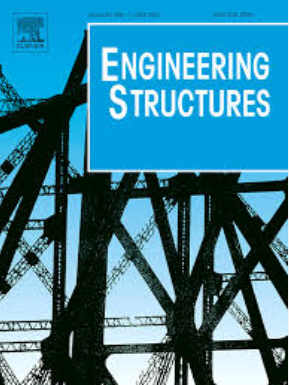A data-driven inverse design framework for tunable phononic crystals
IF 5.6
1区 工程技术
Q1 ENGINEERING, CIVIL
引用次数: 0
Abstract
Soft phononic crystals have significant advantages for tuning bandgaps and undergoing reversible large deformations. Despite the superior tunability performance of soft phononic crystals, most existing research methods typically rely on iterative searching aided by researchers’ experience and optimization algorithms to obtain a structure with desired properties. In this paper, we develop an inverse design framework based on deep learning methods. The framework combines Residual Network (ResNet) and Conditional Generative Adversarial Network (CGAN) to establish a bidirectional relationship between tunable phononic crystal structures and their dispersion relations. The results show that the framework can accurately predict the dispersion relations for given structures and design near-optimal structures for the given dispersion relations through a statistical optimization strategy. In addition, the framework can be used to design structures with specific bandgaps. The developed framework can accelerate the design process of tunable phononic crystals and provide new solutions for material design research.
求助全文
约1分钟内获得全文
求助全文
来源期刊

Engineering Structures
工程技术-工程:土木
CiteScore
10.20
自引率
14.50%
发文量
1385
审稿时长
67 days
期刊介绍:
Engineering Structures provides a forum for a broad blend of scientific and technical papers to reflect the evolving needs of the structural engineering and structural mechanics communities. Particularly welcome are contributions dealing with applications of structural engineering and mechanics principles in all areas of technology. The journal aspires to a broad and integrated coverage of the effects of dynamic loadings and of the modelling techniques whereby the structural response to these loadings may be computed.
The scope of Engineering Structures encompasses, but is not restricted to, the following areas: infrastructure engineering; earthquake engineering; structure-fluid-soil interaction; wind engineering; fire engineering; blast engineering; structural reliability/stability; life assessment/integrity; structural health monitoring; multi-hazard engineering; structural dynamics; optimization; expert systems; experimental modelling; performance-based design; multiscale analysis; value engineering.
Topics of interest include: tall buildings; innovative structures; environmentally responsive structures; bridges; stadiums; commercial and public buildings; transmission towers; television and telecommunication masts; foldable structures; cooling towers; plates and shells; suspension structures; protective structures; smart structures; nuclear reactors; dams; pressure vessels; pipelines; tunnels.
Engineering Structures also publishes review articles, short communications and discussions, book reviews, and a diary on international events related to any aspect of structural engineering.
 求助内容:
求助内容: 应助结果提醒方式:
应助结果提醒方式:


